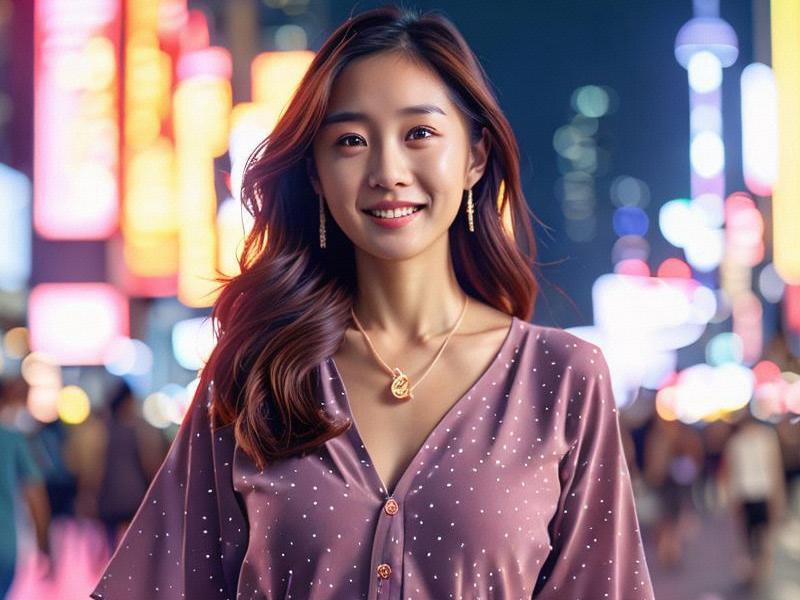This article delves into the evolution of beauty standards and practices in Shanghai, exploring the city's transition from a hub of traditional Chinese elegance to a global center for modern fashion and beauty. It examines the cultural, social, and economic factors that have shaped Shanghai's beauty scene over the decades.

Shanghai, a city that has always been at the forefront of China's modernization, is not only a financial and commercial powerhouse but also a beacon of beauty and fashion. Over the years, Shanghai has undergone a remarkable transformation in its beauty standards and practices, reflecting the city's dynamic cultural evolution.
In the early 20th century, Shanghai was known as the "Paris of the East," a cosmopolitan city that attracted people from all over the world. During this period, traditional Chinese beauty ideals were deeply rooted in society. Women with delicate features, fair skin, and a slender figure were considered beautiful. These beauty standards were influenced by Confucian values and the concept of "yin," which emphasized softness, grace, and modesty.
Traditional beauty practices in Shanghai included the use of natural ingredients for skincare and makeup. Rice powder was a common ingredient used to achieve a fair complexion, while pearl powder was applied to enhance the glow of the skin. Women also used herbal teas and facial massages to maintain their beauty and youthfulness.
However, with the influx of Western culture and the opening of Shanghai to foreign trade in the late 19th century, the city's beauty scene began to change. Western fashion and beauty trends started to influence the local population, leading to a gradual shift in beauty ideals.
In the 1920s and 1930s, Shanghai became a center for modern fashion and beauty. The city was home to numerous beauty salons, boutiques, and department stores that offered the latest European and American cosmetics and fashion items. Women began to embrace Western-style makeup, such as lipstick, mascara, and eyeshadow, which were previously considered too bold and daring.
上海龙凤论坛419
The rise of the film industry in Shanghai also played a significant role in shaping the city's beauty standards. Actresses like Zhou Xuan and Bai Yang became icons of beauty and fashion, inspiring women to emulate their styles. The glamorous lifestyles of these stars, as depicted in films and magazines, further fueled the desire for modern beauty.
During the Communist era in the mid-20th century, Shanghai's beauty scene underwent a significant transformation. The emphasis on traditional Chinese values and the rejection of Western influences led to a decline in the popularity of Western-style beauty practices. Instead, the focus shifted to natural and simple beauty, with an emphasis on health and hygiene.
In the 1980s and 1990s, with the economic reforms and opening up of China, Shanghai experienced a resurgence of interest in Western fashion and beauty. The city became a hub for international brands and fashion shows, attracting designers, models, and beauty experts from around the world. The younger generation, in particular, embraced global beauty trends, experimenting with different styles and looks.
Today, Shanghai is a global center for fashion and beauty, blending traditional Chinese aesthetics with modern Western influences. The city's beauty scene is characterized by a diverse range of beauty practices, from traditional Chinese skincare to cutting-edge cosmetic procedures.
上海龙凤sh419
One of the most significant trends in Shanghai's beauty industry is the growing popularity of natural and organic skincare products. With increasing awareness of the harmful effects of chemicals and synthetic ingredients, many consumers are turning to natural alternatives. Brands like Dr. Wu and My Beauty Diary have gained a strong foothold in the market, offering a wide range of herbal and botanical skincare products.
In addition to skincare, makeup has also become an essential part of Shanghai's beauty culture. The city is home to numerous makeup artists and beauty influencers who crteeaand share their looks on social media platforms like WeChat and Instagram. The rise of the "internet celebrity" economy has further fueled the demand for makeup tutorials, beauty tips, and product reviews.
The fashion industry in Shanghai is equally vibrant, with the city hosting numerous fashion weeks and exhibitions. Designers from both China and abroad showcase their latest collections, reflecting the city's cosmopolitan spirit. High-end boutiques and luxury brands line the streets of areas like Nanjing Road and Huaihai Road, catering to the tastes of affluent consumers.
However, the rapid pace of modernization and globalization has also brought challenges to Shanghai's beauty scene. The pressure to conform to unrealistic beauty standards, often perpetuated by social media, has led to issues like body image dissatisfaction and eating disorders among young people. The beauty industry has a responsibility to promote healthy and inclusive beauty ideals, encouraging individuals to embrace their natural features and diversity.
上海花千坊爱上海
Moreover, the environmental impact of the beauty industry cannot be overlooked. The production and disposal of cosmetics and packaging materials contribute to pollution and waste. Sustainable beauty practices, such as using eco-friendly ingredients and reducing plastic waste, are becoming increasingly important in Shanghai.
Despite these challenges, Shanghai's beauty scene continues to thrive, reflecting the city's dynamic and innovative spirit. The blend of traditional Chinese aesthetics with modern Western influences has created a unique and vibrant beauty culture that is both locally rooted and globally connected.
In conclusion, Shanghai's evolution from a hub of traditional Chinese elegance to a global center for modern fashion and beauty is a testament to the city's cultural transformation. The beauty standards and practices in Shanghai have been shaped by historical, social, and economic factors, reflecting the city's dynamic spirit. As Shanghai continues to grow and evolve, its beauty scene will undoubtedly remain a fascinating and influential aspect of the city's cultural identity.